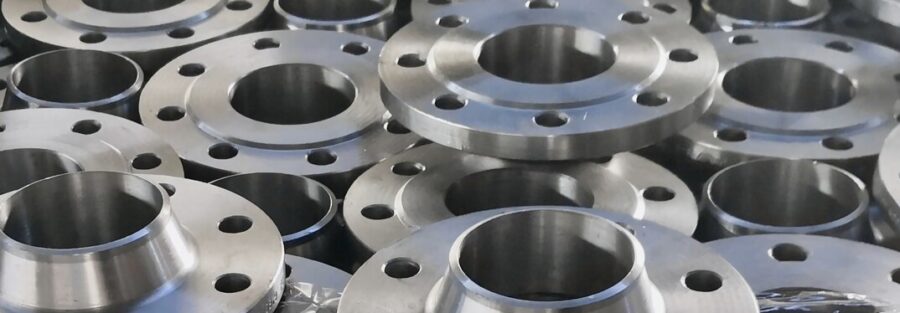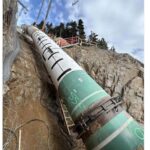Flange fittings occasionally provide advantages to the piping system that traditional hydraulic fitting types do not, even in cases where flanges and/or flange fittings are the only viable alternative. In larger OD scenarios, flanges may often be linked to pipe (tube or hose) and component ports more easily than threaded fittings or adapters. Most importantly, flanged connectors perform best in a range of demanding service applications on mobile construction equipment, including:
They are easier to assemble with moderate torque in limited spaces where wrenches may not have sufficient clearance to attach standard flange fittings.
Difficult-to-reach areas require flexibility, eliminating the need for adapters in the tube, conduit, or hose line.
Large hose, tube, or pipe connections that potentially damage a standard large hydraulic fitting owing to shock, vibration, high pressure, and/or pressure surges.
Reducing the likelihood of parts coming free in harsh hydraulic applications.
Using flange connections rather than big fittings in this larger size, high-pressure condition simplifies assembly. The zero-clearance assembly of a flange fitting makes it simple to disconnect and reconnect hose, tube, and manifold connections during maintenance. This is significantly faster and more accurate than attempting to apply the appropriate torque to a large fitting. When clamping is done directly around the flange head, the connection between a flange and a flange fitting is significantly less likely to break free than a typical hydraulic fitting, Consider fastening your car’s wheel to the hub or braking drum disc. If you don’t tighten the lug nuts in a star pattern, the wheel will not tighten uniformly, causing the braking disc, rotor, or drum to warp. Flange connections are also the best option for hose end connections with bends that are subjected to significant lateral forces that could dislodge the assembly.
Flanges are an important aspect of many industrial applications, especially in the pipe and plumbing industries. These are flat discs with protruding rims that connect pipes, fittings, and other components in a piping system.
The advantages of employing flanges in piping systems are numerous. Here are some of the main benefits:
Flanges provide simple installation and disassembly of piping components, making it possible to maintain, repair, or replace components without disassembling the complete piping system.
Strength and Durability: Flanges form a stable and robust connection between piping components, allowing the system to tolerate high pressure, temperature, and vibration. They are composed of steel, aluminum, or titanium and are intended to withstand severe temperatures.
Versatility: Flanges come in a variety of sizes and shapes, allowing them to fit into any plumbing system. This implies they can be employed in a variety of industrial settings, including chemical, petroleum, and water treatment facilities.
Cost-effective: Flanges are an inexpensive technique to join pipe components. They eliminate the need for costly welding or threading processes, and their straightforward design makes them simple to produce and install.
Flanges help prevent leaks by creating a tight seal between piping components. This is especially crucial in situations when the fluid being conveyed is toxic or caustic.
Overall, the advantages of employing flanges in piping systems are significant. They provide a strong and secure connection between piping components, making them suitable for use in a variety of industrial applications.
Advantages of Flanges: Materials and Dimensions
Flanges link pipes, valves, pumps, and other components to form a piping system. Most flanges are screwed or welded together. Flanges make it easier to repair and maintain a pipe system. Instead of inspecting the entire pipe, a small part can be tested using a flange to identify the problem. The flange will allow you to easily inspect and clean a pipe.
Two flanges are bolted together, and a gasket is utilized to seal the gap between them. Flanges are utilized in several industries, including chemical, oil & gas, and petroleum. The most common types of flanges include slip-on, welding, socket, blind, lap joint, and threaded. There are several varieties of flanges, including orifice flanges, expander flanges, reduction flanges, nipoflanges, long welding flanges, and neck flanges.
Material
Carbon steel: ASTM A105,ASTM A105N,GB 20,C22.8.
Alloy steel: ASTM/ASME A182 F1-F12-F11-F22- F5-F9- F91
Stainless steel: ASTM/ASME A182 F304-304L-304H-304LN-304N
ASTM/ASME A182 F316-316L-316H-316LN-316N-316Ti
ASTM/ASME A182 F321-321H, F347-347H
Low temperature steel: ASTM/ASME A350 LF2.
High performance steel: ASTM/ASME A694 F42 , F52, F56, F60, F65, F70
Dimension
The flanges come in various sizes. There are several standard measurements for each flange. Flanges are the same size all around the world, allowing for smooth operations, repairs, and maintenance. The measurements are in millimeters.
The major measurements of a flange are the outside diameter, bolt diameter, thickness, number of bolts, and bolt sizes. The bolts are located on the outside of the front flange. The gasket that connects two flanges is the same size and number of bolts as the flanges.
Disadvantages of flanges
While flanges are an important part of many industrial applications, they do have some drawbacks that should be considered. Here are some of the major drawbacks of employing flanges in piping systems:
Installation costs: Flanges require nuts, gaskets, and other hardware. This increases the total cost of the piping system, and the installation process can be time-consuming and difficult.
Corrosion Risk: Flanges are frequently made of steel or iron, both of which are susceptible to corrosion over time. This can weaken the connection between piping components, resulting in leaks.
Flanges are designed to handle high pressures and temperatures, but they are also susceptible to excessive stress. If the system receives extreme vibration or shock, the flanges may fail, resulting in leaks or other issues.
Risk of Assembly Error: Flanges must be properly assembled to provide a tight seal and prevent leaks. If the assembly is done poorly, the system may not perform properly, posing safety risks.
Flanges are hard components that might reduce the flexibility of a plumbing system. This can make it difficult to avoid roadblocks or make improvements to the system without considerable alterations.
While there are certain disadvantages to using flanges in piping systems, the benefits frequently outweigh the negatives. Proper installation and maintenance can assist to reduce the dangers associated with flange use, and they are still a common choice for joining piping components in a variety of industrial applications.




